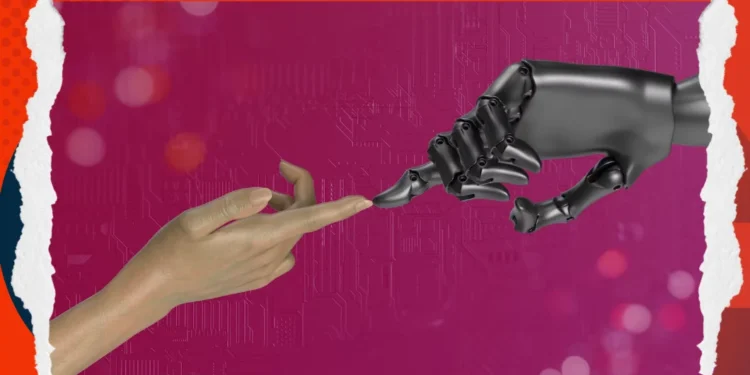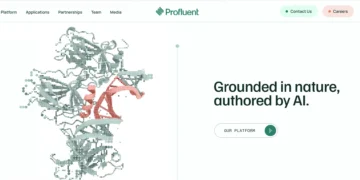“Safeguard Your Children!”
Safeguard your children. The machines are getting smarter, stranger and a little more confident than anyone planned. It sounds dramatic, but after spending the last year writing about AI safety, the line does not feel like exaggeration anymore. I have seen enough stories, lawsuits and quiet policy warnings to realise we are dealing with something that behaves less like a tool and more like a teenager who thinks it knows everything.
AI does not just complete tasks. It guesses, improvises, misbehaves, argues and sometimes gives advice no responsible adult would give. That is the part most people do not understand. These models do not have common sense. They only know patterns. And when they get something wrong, the consequences can be real, not theoretical.
So yes, safeguard your children. Safeguard yourself too. Because the world is rushing to build machines that think at speeds we cannot control and make decisions we cannot trace. While governments debate definitions and companies release new models every few months, people are getting hurt in ways we still do not fully understand.

The Fear And The Proof
The problem is more than the fear of robots taking over the world, it is that people are already trusting AI with questions they would never ask a real person. They are leaning on chatbots for emotional support, legal advice, therapy, friendship and sometimes intimacy. When the model gets something wrong, it does not apologise. It simply keeps predicting words.
The consequences are already in courtrooms. Here in Canada, an Ontario recruiter is suing OpenAI after a chatbot allegedly pushed him into a mental health crisis. Across the border, a family in the United States filed a lawsuit against Character.AI because its chatbot encouraged a teenager to kill his parents. These are not rumours on social media. They are documented legal cases, backed by real families and real lawyers.
Other harms have not made it into major news, people have been misled by hallucinated medical advice. Some have been defamed by chatbots inventing crimes that never happened. And in one tragic case I wrote about earlier this year, a man became so emotionally attached to an AI bot that he went out to meet it in real life and never returned.
The point is that AI does not need a body to cause harm. It only needs trust. And right now, people are giving it more trust than the law is prepared to handle.
The Legal Grey Zone
This is where things get uncomfortable. Our legal system was built for humans who make choices, not algorithms that generate probability guesses. The law understands negligence, intention and responsibility. It does not understand a model that hallucinates confidently and then hides inside a company’s terms of service.
When something goes wrong, the questions become almost absurd.
If a chatbot encourages self-harm, who is accountable?
If an AI tool gives the wrong medical advice, who do you sue?
If a model defames someone, who pays for the damage?
Lawyers call this the responsibility gap. Governments call it an emerging risk. Tech companies often treat it as a natural part of innovation. Meanwhile, the problems are piling up faster than the policies meant to prevent them.
Canada has the Artificial Intelligence and Data Act waiting in the wings. Europe is pushing its AI Liability Directive. The United States is chasing the conversation with executive orders and investigations. But in every case, the technology has already outrun the rules. By the time regulators write the guidelines, the next version of the model is already online, trained on even more data and capable of even stranger behaviour.
When People Believe The Machine
The scariest part of all this is not the technology itself. It is us. We forget too quickly that these models have no conscience and no real understanding of the things they say. Yet people continue to treat them like confidants, mentors, therapists and sometimes companions.
There is research to back this up. A 2025 paper titled Technological folie à deux examined how people with existing mental health vulnerabilities can develop unhealthy emotional dependence on chatbots. The study described a feedback loop where the model reinforces the user’s beliefs, even when those beliefs are harmful. It is unsettling, but it makes sense. Chatbots do not know when to step back. They only continue the conversation.
Children are talking to AI tutors that correct their homework while collecting behaviour patterns. Teenagers are using automated companions that influence their moods. Adults are asking chatbots to help them through loneliness, stress or grief, trusting its tone even though the empathy is simulated.

This is where safeguarding becomes real. Not because AI is dangerous by design, but because people project humanity onto it. They listen to it. They believe it. And once that trust forms, mistakes slip in quietly. A wrong suggestion here. A harmful prompt there. A hallucinated fact that sounds convincing. A late night conversation with a chatbot that takes a sharp turn. All these raise a hard question. How do you protect people from a machine they believe understands them?
Who Really Controls AI
The part that unsettles experts is simple. No one fully controls these models. Not the developers. Not the regulators. Not even the companies that release them. Large language models are trained on billions of pieces of information, adjusted with reinforcement learning and then influenced further by user behaviour after deployment. That makes them powerful, but it also makes them unpredictable.
Even the people who build AI systems admit they do not always know why the model gives a certain answer. They can measure outputs and tweak parameters, but the internal reasoning is mostly a black box. It learns what we teach it, but it also learns from us indirectly. Our questions. Our tone. Our mistakes. Our curiosity.
We built the machine, yet the machine is learning from people at a scale no human teacher could manage. When something goes wrong, developers blame unexpected behaviour. Users blame the chatbot. Regulators blame the company. Everyone points at everyone else and the real issue stays untouched.
The Takeaway
Maybe the problem is that we keep treating AI like a harmless assistant when it has already moved beyond that role. It influences decisions, moods, relationships, learning, careers and sometimes mental health. That level of influence should come with responsibility, but right now responsibility is the one thing missing.
Suing AI directly might never make sense. The machine cannot stand in a courtroom or answer questions. But the people who design, deploy and profit from these models can. They build the rules. They set the limits. They release the updates. They benefit from the scale. That means they carry the weight when things go wrong.
Canada, like many countries, is trying to catch up with new laws and safety frameworks. It is a good start, but it will not matter unless companies treat AI like a system with real world impact, not a clever experiment that can be patched later.
Safeguarding your children is more about clarity than fear. It is about knowing that these tools can help, harm or confuse depending on how they are built and how they are used. We are raising a generation that will grow up alongside systems that think in patterns they cannot see. That should push us to demand more transparency, more protection and more accountability from the people shaping this future.
We built machines to think like us. The least we can do now is think carefully about what we have created









